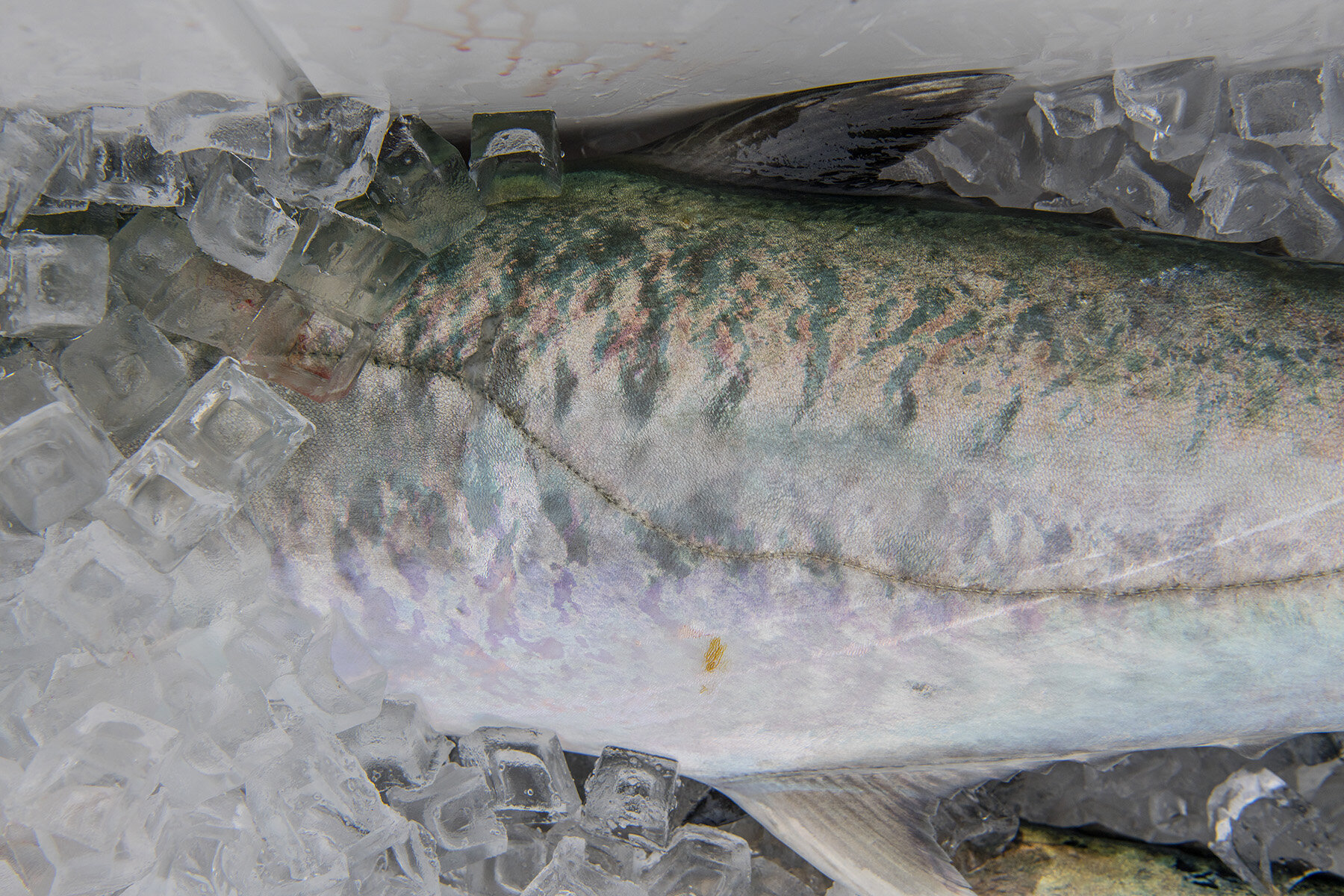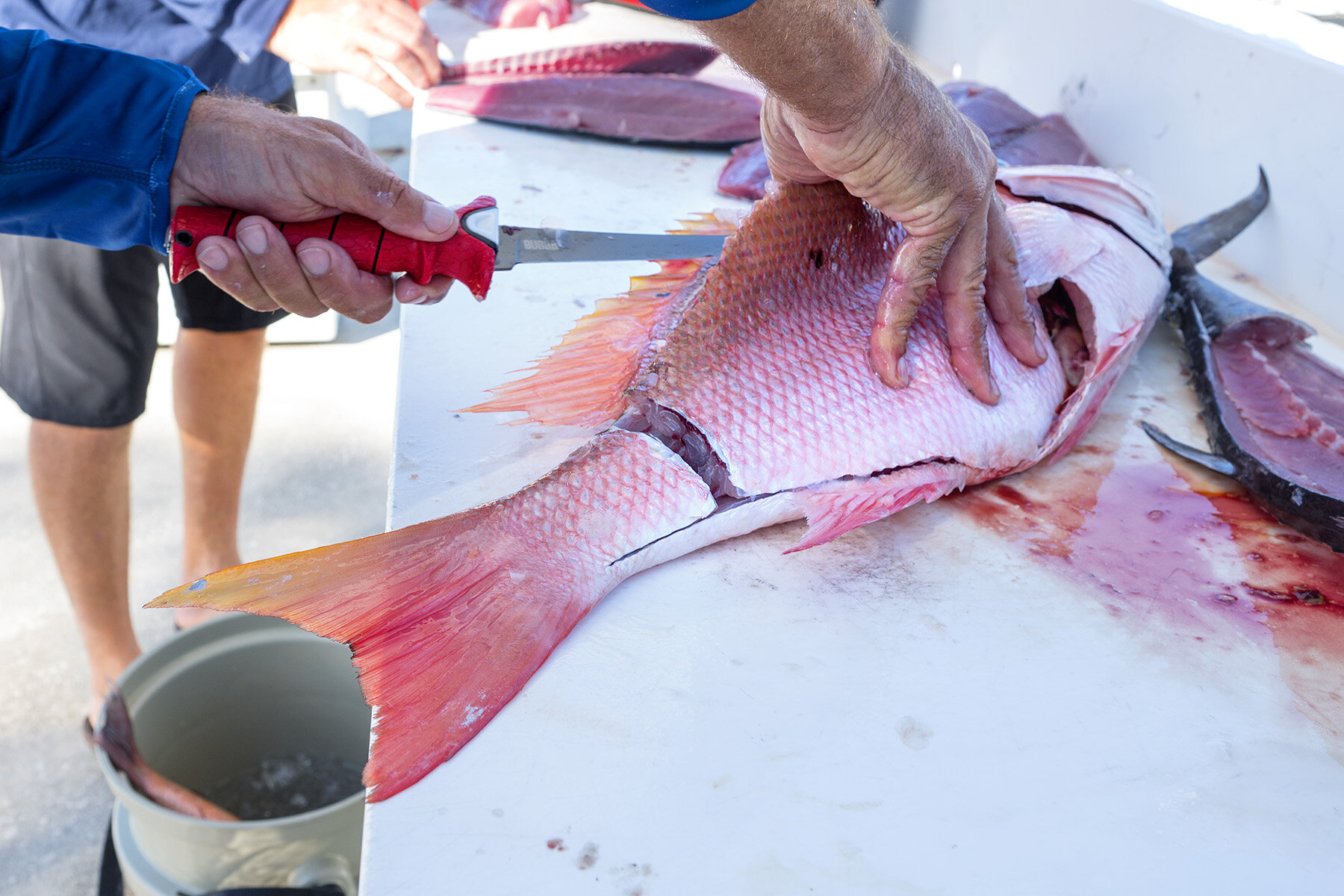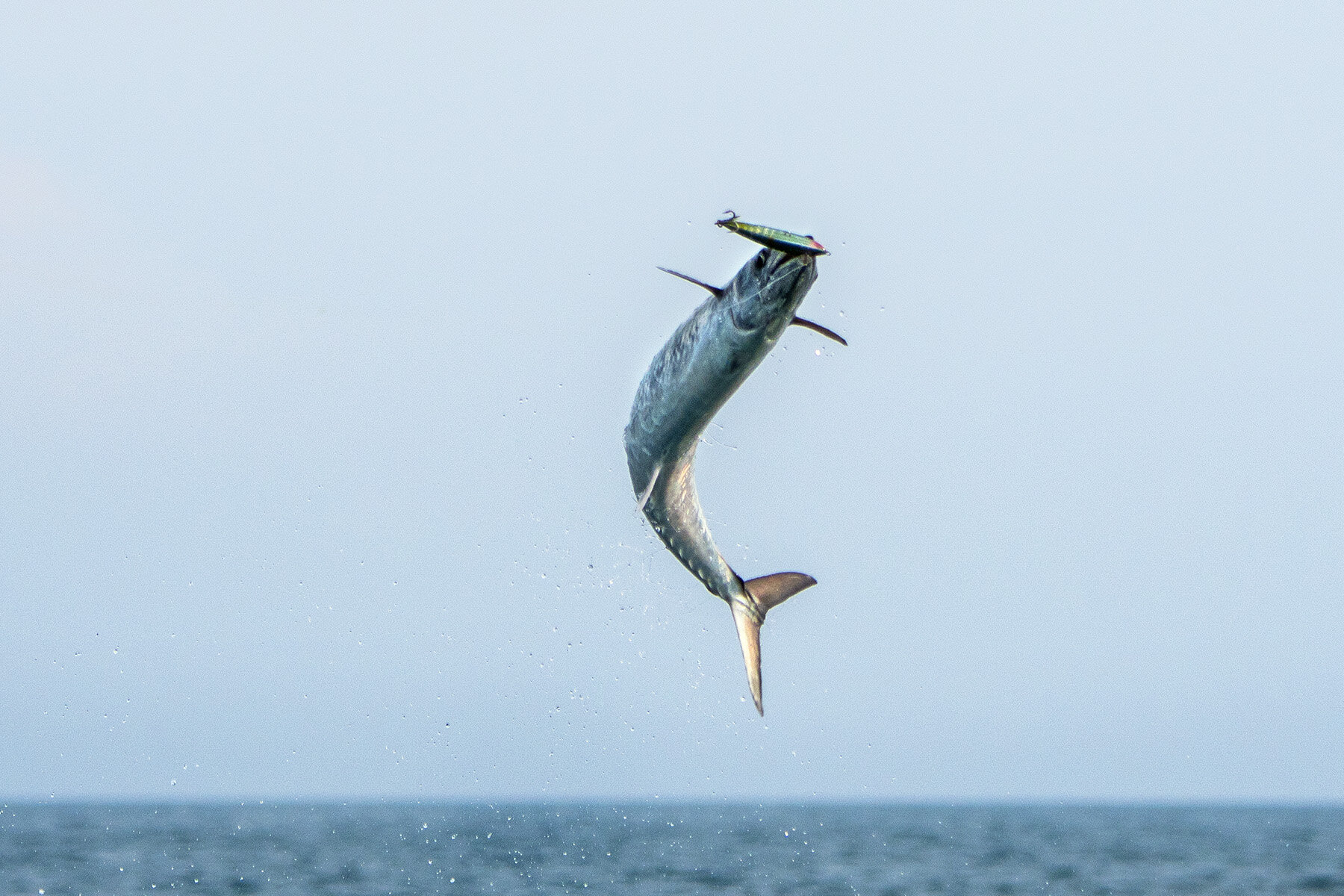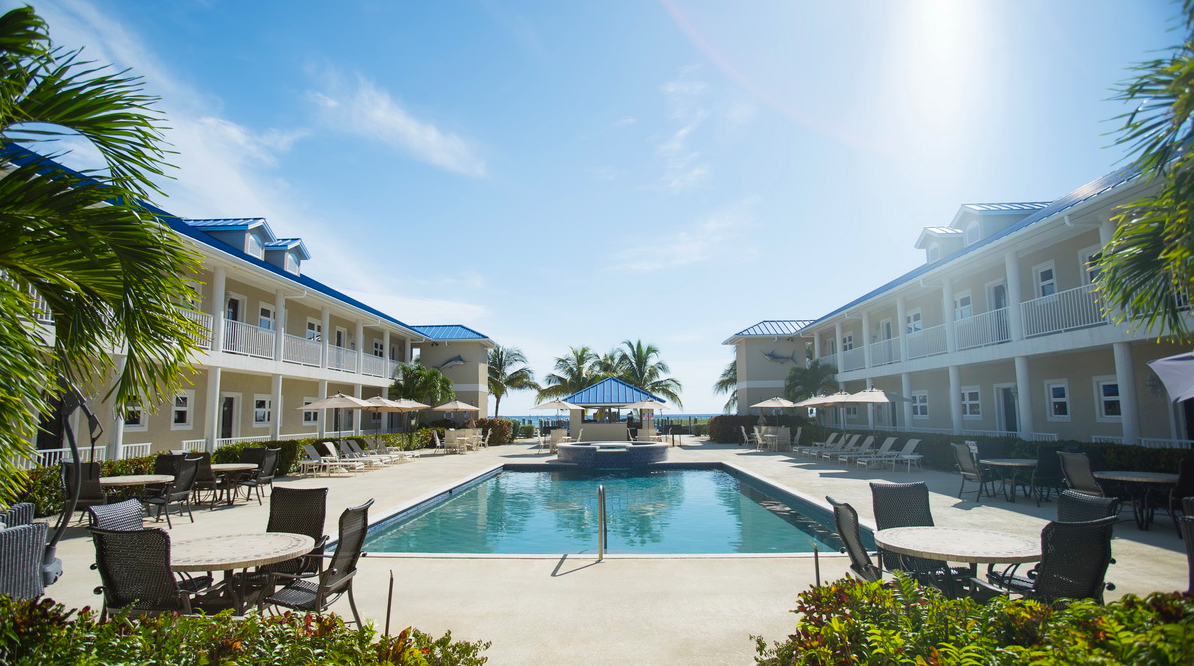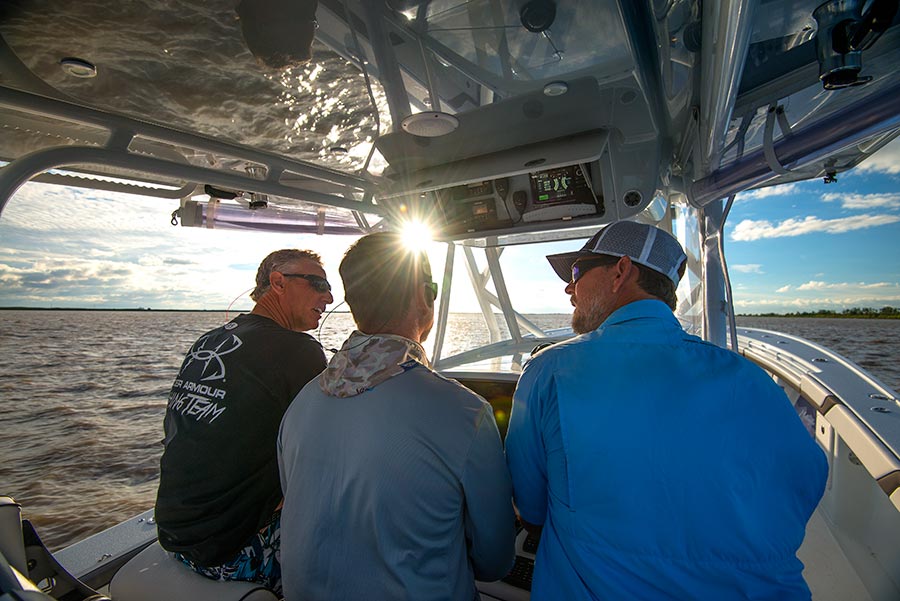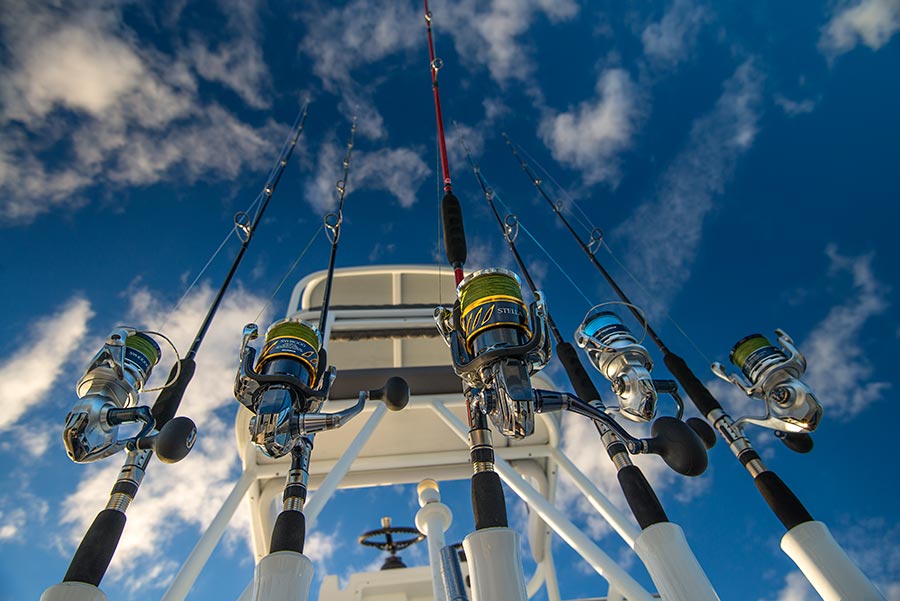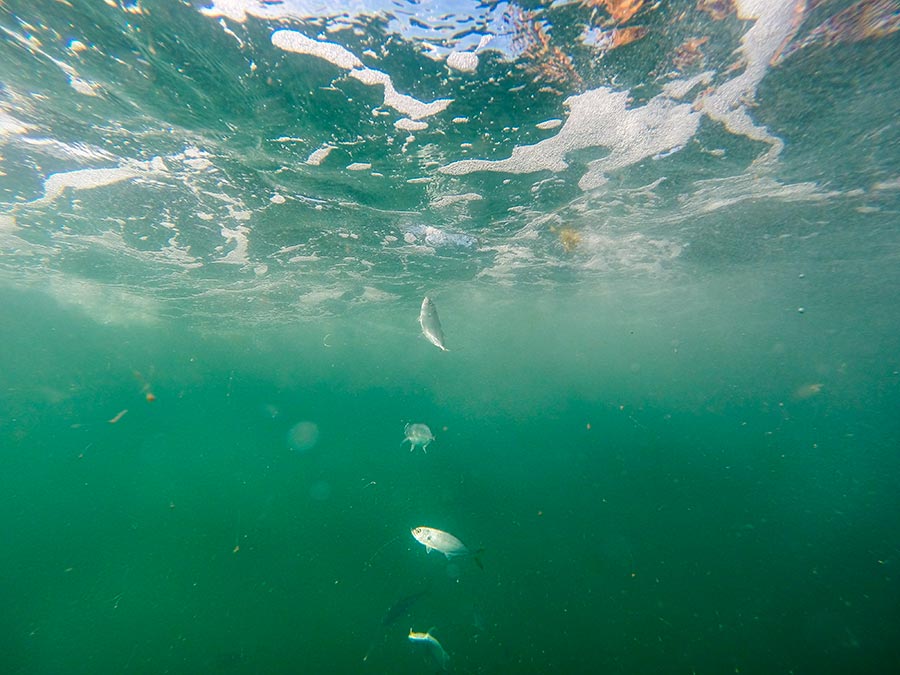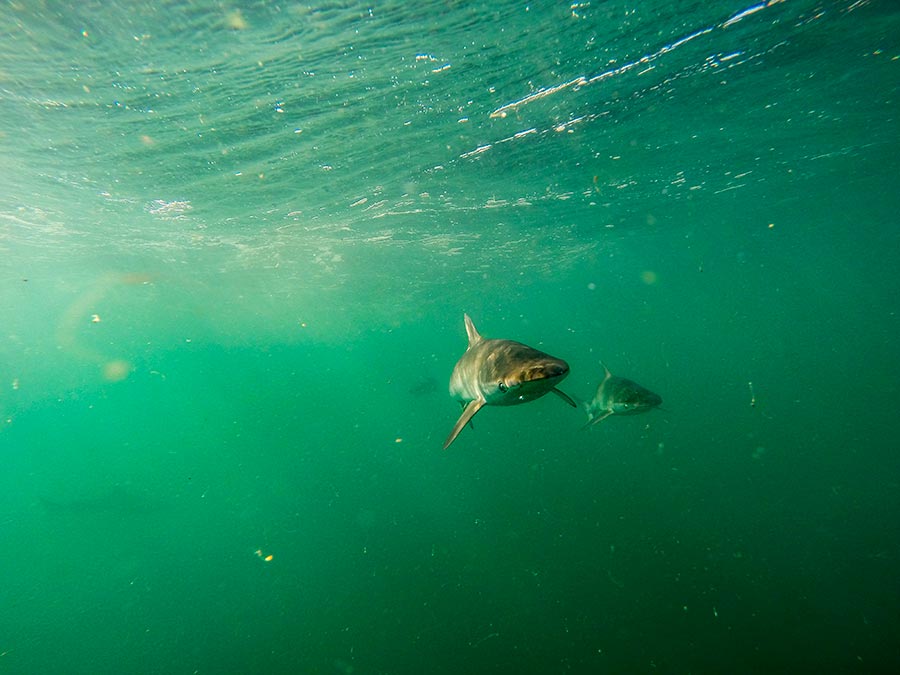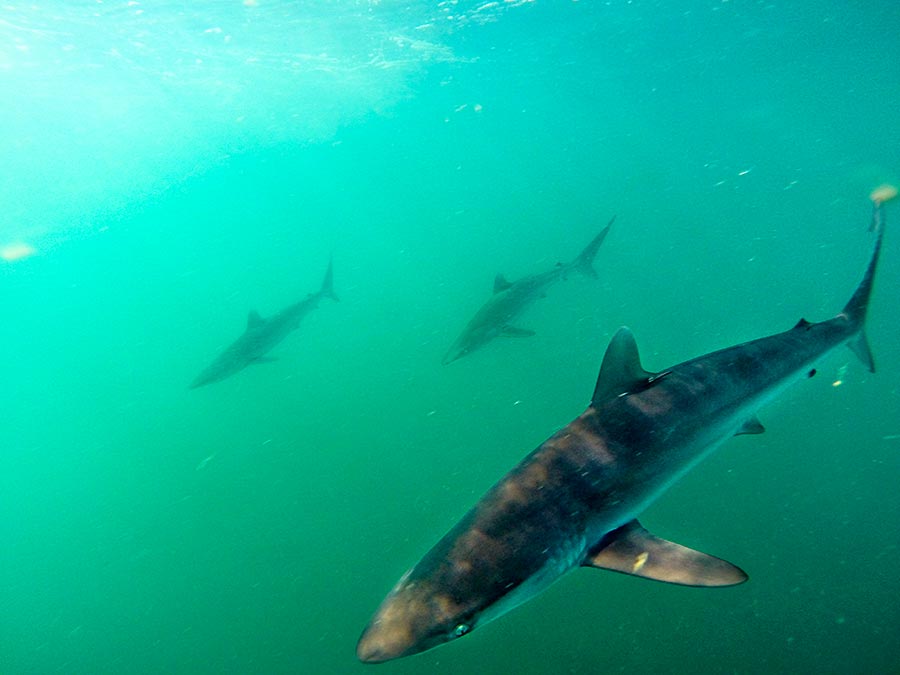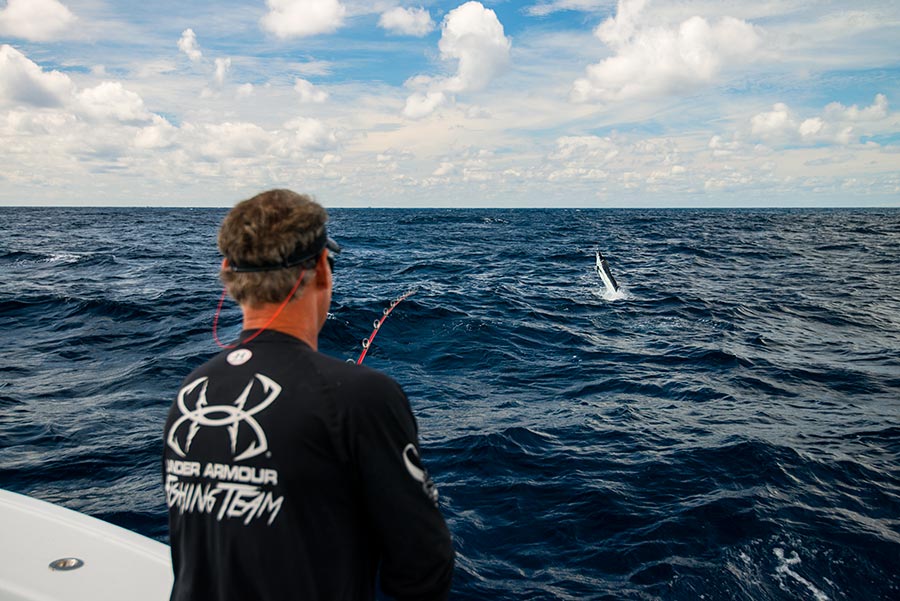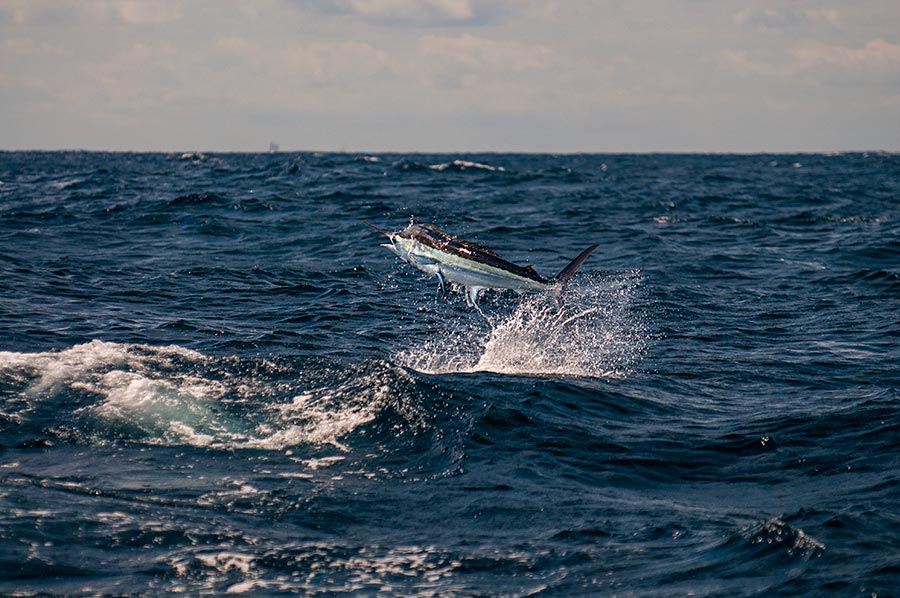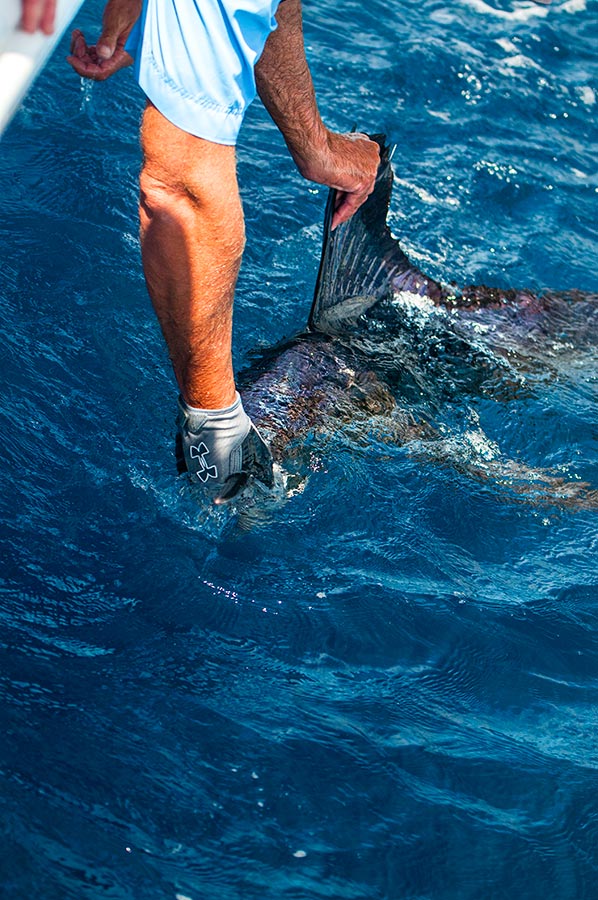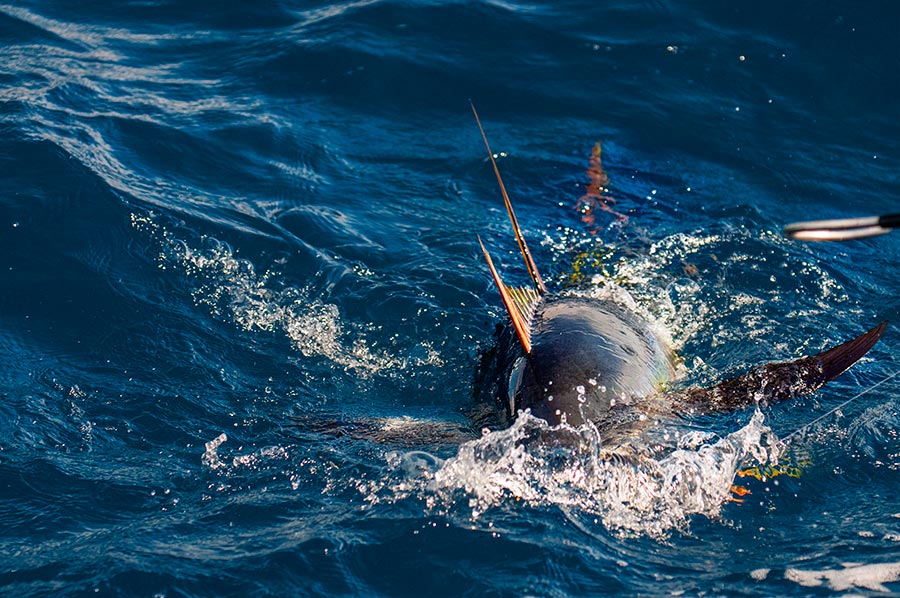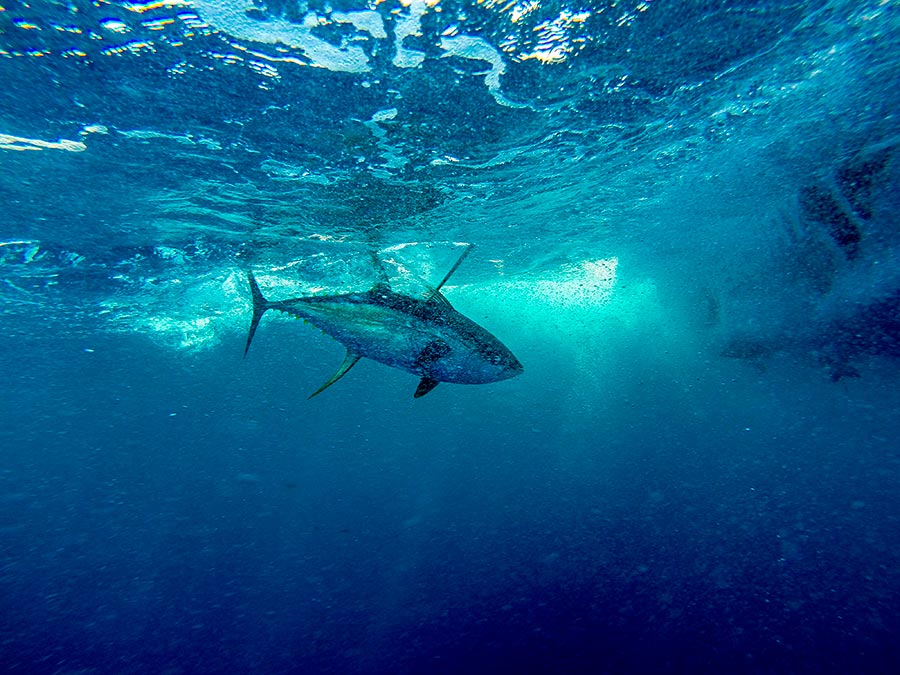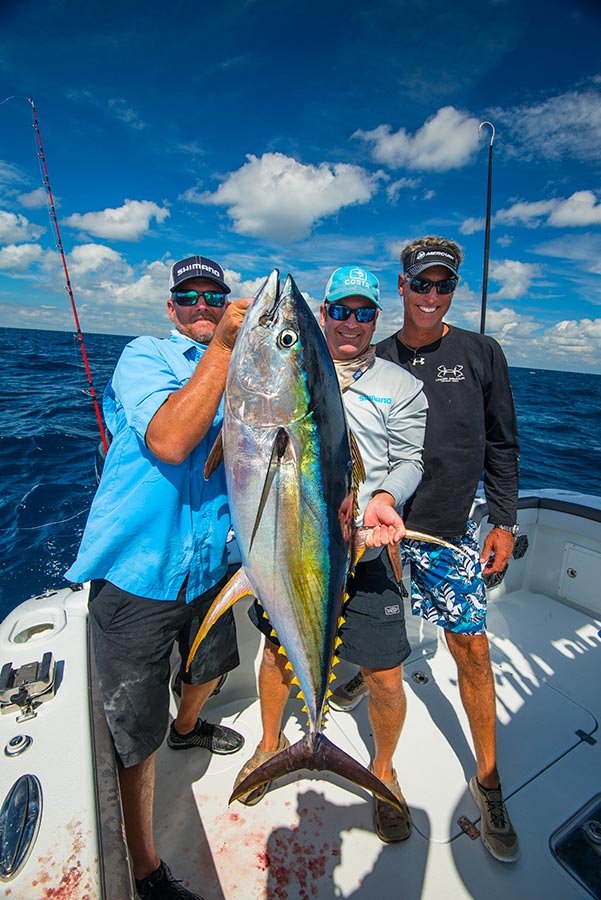Blue Marlin Cove Resort and Marina located in Grand Bahama announces their new partnership with the highly established offshore fishing television show, Into the Blue. The production team from Into the Blue will come to the Bahamas this spring and film 3 episodes of Into the Blue...
The Best Live Ballyhoo Rig With A Circle Hook
Preserve Your Catch-Homemade Vacuum Sealer
Best Last Day Ever! Scott Walker Slams in Mexico!
Aboard the Ringleader, a 63 foot Weaver, Capt. Scott Walker gets ready for the last day of this trip. Mexico has been good to the crew with amazing food like Scott's Tuna Salad (Click Here for his awesome recipe) local treats and some of the best fishing in the World.
Walker's Tuna Salad
What do you do with the odd shaped end pieces off of your Tuna steaks?
Scott Walker shows you how to make an unbelievable Tuna Salad with the end pieces and...a microwave!
Check it out here:
Scott Walker's Go-To Knot
It is hard to argue with Scott Walker's success rate. His knots are strong, his tackle is meticulously rigged and cared for and his boat is impeccable.
When Scott says something works, it is best to listen. You see, Scott doesn't take anyone's word for things that work. He begins a process of testing and retesting until he is satisfied. My experience with Scott is that his process takes alot longer than others and involves alot more testing.
When you get on Scott's boat, every rod looks exactly the same. Every leader is the same length and every knot is exactly the same. This is no accident nor is it an OCD Captain gone crazy. Scott has found precisely what works and replicates it every time.
His go-to knot for tying on a hook is the snell knot.
Check out the way he ties it here:
4 Steps To Prepare Hook Baits
Last week we saw Scott Walker change his Swordfish rod over to a rig to pull a 60 pound dredge for Marlin fishing and he taught us how to properly make a crimp. Today, we see him rig his hook baits in a 4 step process.
Of all the Captains I have ever fished with, Capt. Scott Walker has always impressed me with the way he prepares his tackle. It is meticulously rigged with great concentration to details and it all looks exactly the same. Scott has found what works for him and he does not deviate from the winning formula. The result is success in tournaments and success for his anglers.
Scott goes through the way he rigs his hook baits for Blue Marlin step by step in an easy to follow instructional video. Notice how he doesnt fully rig 1 bait at a time, rather, he gets everything ready, measured and perfect and then starts to rig the baits.
Check out this video:
How To Make A Perfect Crimp To Pull A Heavy Dredge
As the seasons change, our gear must also change. Scott Walker is taking his Swordfish rod and converting it to a rig for pulling a dredge for Blue Marlin. The dredge that he will pull is very heavy and resistant. The tackle has to be strong to simply pull it all day but also has to be strong enough to withstand (hopefully) many attacks on the dredge through the day.
One of the changes that has to occur is to cut the terminal end off the Swordfish tackle and crimp a swivel onto the end of the line with a thimble and protector.
Scott goes step by step through the process of making this crimp and shows you precisely how to crimp for maximum strength and durability. Of course, there are tons of other uses for a crimp beyond pulling a dredge and Scott's instructions apply anywhere you may need a super strong crimp.
Check it out here:
Photog Blog- By Jason Stemple
Red, White and Blue Show
sunrise at the marina, looks like a good start to the day. nikon d800, 16mm, f/4.0, 1/30 sec
fire in the sky. nikon d300s, 70mm, f/4.0, 1/80 sec
The day we shot the Red, White and Blue show was probably my favorite day of the trip. We arrived at the marina and loaded gear into the two boats while an amazing sunset exploded the sky with color. As we rolled out into the channels that led us to the Mississippi it became clear that this would be by far, the calmest day we had seen. We stopped on our way out to cast net some mullet, then headed out a little ways to Sabiki up some blue runners as well. I was on the fishing boat from the start, so was able to shoot some good bait catching shots and some other detail stuff that I hadn’t been able to do from the camera boat.
a nice run out the mississippi. nikon d800, 16mm, f/5.6, 1/800 sec
The little sharks were quick to join the blue runner party, so as Scott and Steve loaded up the livewells, I shot some underwater of the little bait stealers. I use a GoPro on a long extendable pole for this kind of shot, it allows me to stay dry and to switch quickly back and forth between underwater and regular photography. The little sharks were fired up after eating a couple of runners, and would come right up to investigate the GoPro with mouths open. I had to dodge the teeth and bump them a few times, but got some fun shots. In about 20 minutes, we were full of bait and settled in for another half hour run out to a deep rig that Captain Billy Wells hoped was holding tuna.
Quickly after arrival at the rig, we saw tuna busting the surface, so they tossed out a few freebies and dropped back a couple of baits and quickly came tight. Scott made quick work of a little Yellowfin, which Steve handled and released. Scott dropped another bait back and a few minutes later called out “white marlin”. He had just seen a quick glimpse of a rounded dorsal working his bait and blurted it out. He came off the declaration a bit as he talked through what he had seen, “could have been a shark…” But he was determined to find out, a moment later he felt the bite, and dropped the bait back so that the fish could eat. Then he reeled down on it, setting the circle hook, the line came tight and the rod bent under the pressure, but there was no jump. Probably just a shark we all thought. But Walker had just come from a summer of amazing white marlin fishing in Maryland, so certainly nobody would want to call his instincts into question. A moment later it launched proving his call correct, and then kept jumping putting on a great aerial display.
Scott loves white marlin almost as much as sailfish, so hooking this fish 1200 miles from where he was catching them a couple of days earlier was awesome. The fight lasted about 25 minutes and when they pulled the fish along boatside, they realized that it was about a 100lb fish, which could have won a lot of money at the tournaments that Scott had been fishing back in Maryland. After a nice release we circled back around to the original position a little ways off the rig.
Now it was Steve’s turn. In the next half hour or so, they caught a few little tuna and worked through some sharks then Steve got a big bite. It became apparent quickly that he was locked into a pretty big yellowfin and that this might take a little while. After about a half hour, he got it to the surface, but with a cameraman in the water and the camera boat coming over for a shot, each time it came up, it would sound again. I was able to use the extended battle to my advantage to get some underwater shots of the tuna and a hammerhead that was investigating the activity. Eventually they brought the tuna on board and again we circled back to deploy more baits.
blue marlin launching. nikon d300s, 150mm, f/4.5, 1/5000 sec
another blue jump. nikon d300s, 200mm, f/4.5, 1/5000 sec
This time they dropped back a little tuna with the other baits to see if there were any bigger marlin around, and it turns out there were. A half-hour after catching the tuna, Steve’s marlin bait got hit hard, and a big blue marlin went airborne. Next, it did a series of jumps right past the rig before circling back around us. The fight went on for about 10 minutes before the big fish broke off, leaving us in silence. Despite losing the big blue, it had been a great day. They went on to catch a few more little tuna before a nice relatively smooth ride back to the docks.
blue marlin tailwalking past the rig before breaking off. nikon d300s, 70mm, f/4.5, 1/5000 sec
Photog Blog- By Jason Stemple
Cobia and Tripletail Show
getting ready to pull up to the first cobia rig. gopro hero3+, f2.8, 1/2500 sec,
This show is really a tale of two very different kinds of fish and different kinds of fishing. As I discussed last week, the wind had been hammering us on and off (mostly on) during our stay in Louisiana, so we had to come up with options that kept us in the fish and out of 10 foot seas. On last week’s show you saw one of those options, as we fished a nearshore rig for red snapper. Another close in option was to go rig to rig searching for cobia. Cobia are strong aggressive fish and are also great on the dinner table. They can be deep at times, but are just as likely to be cruising the surface circling a rig, where they can be sightfished.
a jig heading right for two surface cruising cobias. nikon d300s, 110mm, f/5.6, 1/200 sec
scott bringing the first cobia to the boat. nikon d800, 28mm, f/5.6, 1/640 sec
steve helping out with the frabill net. nikon d800, 22mm, f/5.6, 1/320 sec
So the drill was to pull up to a rig and look around on the surface while casting jigs and letting them drop down a ways next to the rig before retrieving them. There is no lack of structure out in the Gulf and it didn’t take us long to find a couple of big brown bombers cruising the surface. Scott hooked one quickly on a jig and its partner sank out of sight before Steve could double it up. Steve kept casting as they will often hang around a hooked fish, but we never saw the second fish again. It took a little while, but Scott got the fish boatside and Steve scooped it up in the Frabill net then it took a nice cool ice bath. A half hour later Scott hooked another nice cobia and they repeated the scenario.
cobia number two on board. nikon d300s, 85mm, f/5.6, 1/800 sec
The tripletail fishing was a little bit different. While they do love structure, we found them in the bay where we were catching bait for the red snapper show just drifting on the surface. So for tripletail, the technique would be to drift the bay with the wind and current looking for single tripletails floating on the surface, then cast live shrimp to them. So we set up on the upwind side of the bay and drifted. We seemed a little overboated, with 2 boats in the upper 30’ range fishing in 15 feet of water, but you roll with the hand you are dealt. And besides, the tower on the 39’ Yellowfin gave them a great height advantage for sightfishing. So Scott, Steve and Captain Kevin Beach from Mexican Gulf Fishing Company were all in the tower with a couple of light spinning rods and a bucket of shrimp.
steve hooked up with a nice tripletail. nikon d800, 35mm, f/9.0, 1/500 sec
Tripletail are funny creature, they will float on their side drifting on the surface or right up against some sort of structure mimicking trash until something smaller swims up to use them as structure themselves, and gulp! When you first see them floating they look like a plastic grocery bag or some other trash until you can get a closer look. We ended up seeing 5 or 6 in our first drift and Steve was able to hook two, getting one to the boat and into the ice. It was Steve’s biggest tripletail to date and he later gave a little clinic on cleaning them back at the dock.
out of the net, into the yeti! nikon d300s, 200mm, f/5.6, 1/1000 sec
Quote of the day “Homie’s like a band-aid” Steve said as he explained how they stick to structure.
tripletail at the fish cleaning station. nikon d800, 98mm, f/5.0, 1/2500 sec
Photog Blog- By Jason Stemple
Red Snapper Show
The northern Gulf of Mexico can be a nasty place. As Steve said, when the wind blows, this place is no joke! So, we had some days when we could get out and chase pelagics, and other days when we were lucky to get out at all. We had the 39’, so that upped our game and allowed us to get out when others were stuck inside, but still on some days going way out just wasn’t a good idea. Luckily, the Gulf has a lot of options including cobia, tripletail and red snapper when going way out isn’t a great idea. On this day, we chose to hit a nearshore rig and have some fun pulling on red snapper and put some filets in the box.
sticking your camera in the water helps make the seas look big. gorpo 3+ black, f/2.8 1/850 sec
It’s likely that no other fish has been the center of as much controversy over the past few years as the red snapper. There is an extreme disparity between stock evaluations and ideas of whose to blame if there is indeed a problem. In the Gulf there seems to be even more issues: with all the oil and money involved, State and Federal agencies have much more to think about, when it comes to who gets to regulate the fish/fishing. Either way, there is no arguing that the oil rigs make excellent habitat for red snapper and that there are plenty of snapper rigs available. So we headed out to hit a rig with Captain Kevin Beach of Mexican Gulf Fishing Company with red snapper in our sights.
Our first stop, as usual, was to catch some bait. This time, we headed into one of the many shallow bays and threw the nets to catch menhaden instead of using Sabikis for blue runners.
steve prepping the net. nikon d300s, 135mm, f/4.0, 1/2000 sec
pancakes for breakfast! nikon d300s, 35mm, f/4.5, 1/1250 sec
Right off the bat, they were hooking up on nearly every drop back into the rig. Many of the fish were pretty small, but eventually, Scott worked a live bait down through the smaller fish and pulled up a couple of keepers. Steve went a different direction and tried to 3 or 4 on at a time and was successful with a multi-hook rig, but Scott’s fish were bigger. A bigger jig was dropped back a few times to prospect for cobia as well, but none showed up at this rig.
Steve hooked up. nikon d800, 155mm, f/5.6, 1/1600 sec
steve with a single triple. nikon d800, 300mm, f/6.3, 1/2500 sec
scott with a nice red snapper. nikon d300s, 160mm, f/5.0, 1/1000 sec
Later back at the dock, the Bubba Blades came out and the snappers were fileted, some heading to the dinner table and others went into the Yeti Hopper for the plane ride back home.
ready for fileting. nikon d300s, 145mm, f/4.5, 1/1000 sec
snapper scales closeup. nikon d300s, 200mm, f/7.1, 1/640 sec
Scott working the bubba blade. nikon d300s, 135mm, f7.1, 1/800 sec
yeti hopper full of filets ready for the airport. nikon d800, 135mm, f/5.0, 1/1250 sec
Jason Stemple
www.jasonstemple.com
jason@jasonstemple.com
IG @jasonstemplephoto
FB Jason Stemple
Questions: Rod and Reel for Yellowfin
Aaron hit us up with an email.
Hi my name is Aaron from boca raton and i want to go trolling for yellowfin tuna in the Bahamas but i don’t want to go and spend all of my money on penn internationals. Do you know of any alternative rod and reel combos and if so what kind of line should i spool it with.
Thanks,
Aaron F.
This one is easy.
Shimano TLD 50W LRS. loaded with 80# braid. Best bang for the buck.
-Scott Walker
I hope that helps Aaron. Send us a picture of that big Yellowfin.
Questions: Anchoring
Hi guys, I was watching the Dry Tortugas, it was a calm day, how many feet of anchor line did you use ?? If it would have been 3 to 5 feet would you have anchored and how mush line would you have used ?? Why don't you like to give your location ?? I would love to go there but I feel it's a waste of time if you haven't been there before !!!!!! Love your show , I've pick up a great deal of information on different fishing solutions.
Thanks Ed
Hey Ed,
We use three times the depth of the water plus the length of the boat. If we told you where we fish there would no longer be any fish for us to film for you!
Thanks for watching the show!
Scott Walker
From Steve:
Ed,
3-5 footers are not a problem. I personally like to use 6X the amount of line per depth. So, 100ft depth = 600 ft of line. The most important piece is the length of chain. When rough, the longer the better. If it's calm you can usually get away with less.
You don't need GPS coordinates if you go to the fort, there are fish everywhere. All we did was ride around and look for hard bottom. The whole place is a fish haven! Took maybe 30 minutes to find a spot.
And the park rangers are very helpful and would be more than happy to point you in the right direction while there.
Thanks for your questions and good luck!
Capt. Steve
Want to ask Scott and Steve a Question? Click Here!

